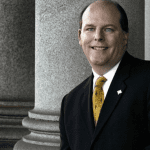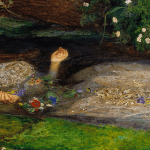As we’ve reached the two-year anniversary of the Haitian earthquake, yesterday we published a reflection on the persistence of faith in suffering from Margarita Mooney at the Black, White and Gray blog, and today I wanted to speak with Kent Annan, who is actually engaged in the day-to-day work of rebuilding Haiti through his ministry, Haiti Partners. Kent’s the author of After Shock and of Following Jesus Through the Eye of the Needle. You can find more about his writing at www.KentAnnan.com, and you can follow him on twitter: @kentannan. First I’ll show a video about the recovery, and then I’ll post the interview.
* * * *
1. What is the status of the recovery from the earthquake? Are people still living in the camps?
About half a million people are living in some form of tent camps or temporary structures. So recovery progress is obviously far, far too slow for each of these boys, girls, women, and men. Excruciatingly slow, two years later. At the same time, many have moved out of those temporary shelters. Building is happening. Projects are underway. So absolutely, the progress is unacceptable with so many people having to accept living in circumstances nobody should have to endure. But the recovery isn’t in a vacuum. The circumstances were very hard before the earthquake. I’m asked this all the time but still struggle to answer succinctly: some progress, too much suffering still, much more progress needed. I guess that says it.
 2. How is the faith of the Haitian people holding up?
2. How is the faith of the Haitian people holding up?
Like with any group or society, there’s not just one monolithic response. On a general level, many people still go to church every Sunday, and there is lots of other continued evidence of how important faith is in so many people’s lives. I can speak a little more about my friends and colleagues, the people I work with regularly. And I see their faith still sustaining them, still central in how they understand life, receive grace and strength. This past September we started a new scholarship program, that we’re calling Micah Scholars. We’re partnering with three Haitian seminaries and providing full scholarships for five students in each, as well as extra support and mentoring. So with this question, my mind goes to these 15 students, who are all in their twenties and early thirties. They’re remarkable young men and women. They’re in circumstances as challenging as almost any in the world. They’re engaged in leadership for their churches and communities. They’re studying hard. They’re excited about the future, without any delusions about the challenges. One more thought, to play off the wording of your question, is that one thing I often find the faith of Haitian people holding up is my own faith.
3. Have American churches basically forgotten about it? Or are they still engaged?
We have great church partners with Haiti Partners — though of course we always want more because there are so many vital needs and opportunities to help. Haiti is an important focus for me, so sure, I wish the American church would be even more involved (well, maybe not always, but as long as they’re involved humbly, thoughtfully, and respectfully). Realistically, though, there are also many needs in American communities, not to mention in places all over the world. My general advice is, it’s good to help out in a crisis, but I think it benefits the people you’re trying to help, as well as your own church, to have a focus that lasts, that doesn’t just jump from place to place, from headline to headline, from trendy cause to trendy cause, every year or two. This lets a relationship develop. It means there can be back and forth. It can break us out of thinking of others as simply victims, and of ourselves as kind of saviors–and then, with a longer commitment, we start to realize how we’re all in this together. That has implications for their lives and for our own lives. That’s my pitch for staying engaged: you’ll help more, and you’ll be transformed yourself in ways that are challenging and transforming.
4. What can we do now to help?
This ties into the previous question. My bias is to invest in education, because ultimately the lasting change in Haiti will of course continue to come from Haitians, not from outsiders. But providing quality education opens new approaches, cherishes each person’s dignity, and is empowering. So I think there’s a tremendous opportunity to partner (with your time, money, talents) with organizations who have been in Haiti for a good while, who know what they’re doing, who are very respectful of Haitians in their approach. And this can happen through supporting education, business investment, medical work, environmental and agricultural work, and many other ways. So the biggest way to help is to follow your heart–and also follow an approach that has commitment and rigorous thinking behind it.
5. Any stories that have touched you in Haiti recently?
Little Darenka, who is about eight and lives near the epicenter of the earthquake, comes to mind right away. Recently I had a fun morning with my colleague John and some students from one of our elementary schools. We were making a video about our work. We were filming a few clips with these students. Making videos is slow-going work, shooting these ten second scenes over and over. It can drive you crazy…unless you all have fun with it. So we had fun. We laughed a lot. I had to pick someone quickly, on the spot, among this handful of young students, who would have to speak a couple of lines of English. Not an easy task. As we talked with them, Darenka quickly showed self-confidence and humor. I asked her if she’d be willing. She said yes. Being willing to do something in front of your peers in a Haitian elementary school is just like an American one: your friends are impressed, but also tease you. (I have a daughter in kindergarten, so I get daily reports.) Darenka was fantastic. (Okay, brief pause. Watch this 2-minute video and I dare you to not have your heart won over by Darenka’s smile!)
Okay, back to the story. So she does a great job. But as much as Darenka’s story is moving, as I think about the long-term development in Haiti, the story that excites me even more of this school she’s attending. Maxandre, a Haitian friend I’ve known for nine years, started it. It was his dream to serve his community this way, and it took a lot of entrepreneurial hard work and persistence to make it happen. We saw he was doing a great job, so started partnering with him. The earthquake struck. This town, where my wife and I had lived, was absolutely devastated. I tell a number of stories from this community in my book After Shock. Well, this school was basically destroyed too. But because of people’s generosity, we were able to rebuild it, which was an important sign of hope in the community during that year after the earthquake. School reopened for the last school year, and they’re halfway through a second year in the new building. Remarkable, really, when you saw how much was still in rubble. And the structure isn’t even the most important part. What’s vital are are the teachers and kids in this school. They’ve received resources. The parents are making great efforts to get them ready each morning. The teachers have received a lot of training from us, so they can keep getting better. They’ve beat me in dance offs, with the embarrassing proof right here on YouTube. Together, teachers in Haiti and donors in the U.S. and people like us who have the privilege to work as a bridge in the middle, get to see this school alive with learning and laughter, even when life continues to be hard in the surrounding community in many ways.
This school–started with Haitian initiative and innovation, helped along by Americans who wanted to partner respectfully, serving 140 children like Darenka — this to me is an inspiring story after the earthquake. Darenka’s smile will and should touch our hearts, but behind it is all the hard work and partnership to serve her in the best way possible. She’s a child of God, and that’s what she deserves. Reflecting on the past two years, my heart is still broken by a lot, but it’s also filled with gratitude and inspiration as I get to see Darenka being given an opportunity to thrive — and to think of how that will ripple out through her community and even her country.
Okay, if you didn’t follow my advice earlier and watch the 2-minute video, really, no lie, you should do it now because you’re day will be poorer for not seeing Darenka’s smile, especially one toward the end, as well as the joy and hope of these other friends and colleagues. We should be unblinking as we look at suffering, but also as we look for hope.
* * * *
For more information about “After Shock,” see this video:
http://www.youtube.com/watch?v=QbPph_G9oco











